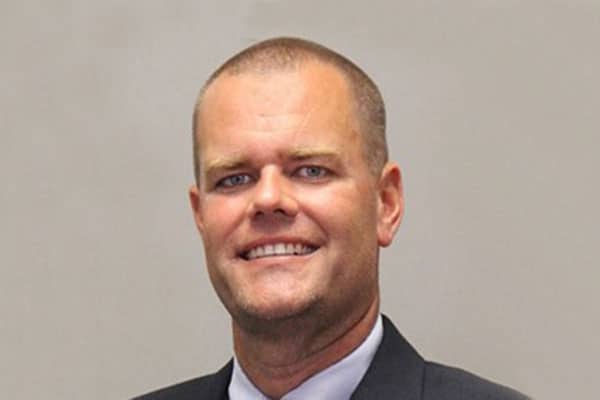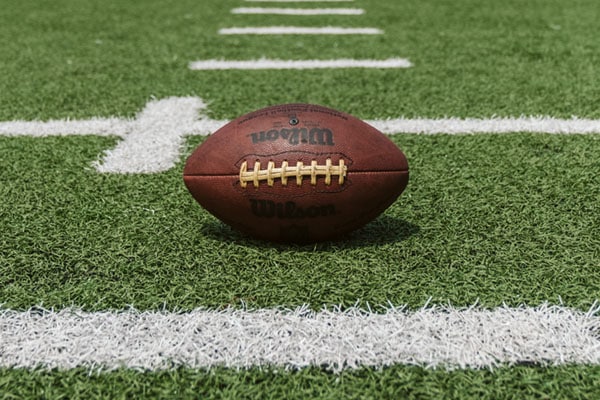Rhodes College | Athletic Trainer Spotlight with Andrew Gibson

Andrew Gibson is the Coordinator of Athletic Training Services at Rhodes College. Gibson received his Masters of Science degree from Murray State University and Bachelors of Science from the University of Memphis. Gibson is a Certified and Licensed Athletic Trainer, a Certified Strength and Conditioning Specialist, Certified in Integrative Dry Needling, Performance Enhancement Specialist, Corrective Exercise Specialist, and Certified in the Functional Movement Screen. He is a member of the National Athletic Trainers’ Association (NATA) and National Strength and Conditioning Association (NSCA).
Awards: Gibson was recognized in March 2017 by the Southeast Athletic Trainers’ Association (SEATA) as the College/University Athletic Trainer of the Year Award. Gibson was recognized in January 2016 by the Tennessee Athletic Training Society (TATS) as the Eugene Smith/Mickey O’Brien Tennessee College Athletic Trainer of the Year. Gibson was recognized in May 2015 by Rhodes College as the Outstanding Administrator Award.
What sparked your interest in athletic training?
I was on the football team in middle school and I took a bad hit to my arm. The other kids said they heard the pop at practice, but I don’t remember that at all. When I was injured, I spent time around the athletic trainers and was immediately attracted to what they were doing. Even then, I thought that being an athletic trainer could allow me to be involved in sports for the rest of my life.
During the 1999 summer pre-season, I did an internship with the Dolphins. At that time, I thought that I wanted to be an athletic trainer with a big, professional team. But then, I spent time at Rhodes College. I fell in love with Rhodes. The people and coaches treated me as an equal. They didn’t treat me like they were my boss, and I was accepted from the very beginning.
What is the culture like at Rhodes College?
We are a small Division 3 school, but our size doesn’t change the level of care. I believe that people don’t care about how much you know, until they find out how much you care. We are in the service industry and we help athletes get better.
When you are with good people every day, you are able to do what you do better. Since I am an out-of-the-box person and thinker, people here let me use my mind. I am able to grow in my position here.
What are your direct duties as the Coordinator of Athletic Training Services?

I have a wide array of duties in my position. In addition to working with our student athletes and athletic training staff, I handle physician oversight, parent oversight, and cross-campus relations.
How big is your athletic training team?
We have 5 full-time athletic trainers, including Jessica Holcomb, Nick Albertson, Diamond O’Donovan, and Michael Sheridan. We embrace the culture together and are a team. I appreciate that we believe in what we do. We are a very tight-knit staff.
What sports do you typically work with?
I work with football, baseball, men’s distance (cross country and track), and golf programs. I also consult with writing the strength and training programs for the baseball team.
Do you typically see similar injuries across all of the sports you work with?
When I see injury trends, I immediately focus on finding ways on how to reduce those injury types. I review the injuries with different sports and learn from the athletes and coaches.
For example, last year, we had too many hamstring injuries. We asked the question of “Why?” and started looking for ways to adjust our training and recovery methods.
I believe that there is always another way to look at something, and we should try to get better every day. You shouldn’t just go with the status quo and expect different results.
What is your philosophy in regards to athletic training?
To start, my philosophy is to put others before yourself and make good care a priority.
In terms of athletic training, our team believes in doing neural resets to help the athletes recover and to help with muscular pain and tightness. I don’t believe in passive care or keeping athlete still when they have an injury. Our bodies were designed to move. We use exercise as medicine, and athletes enjoy that philosophy. That is why we include the Marc Pro and other methods like dry needling, cupping and strength and conditioning concepts into our regular athletic training room protocols.
What shifts have you seen in athletic training throughout the years?
Recovery methods have changed from when I started in the field. It used to be a lot of ice and e-STIM for athlete recovery and injuries.
Now, we focus on a progressive model based on functional movement patterns. We use an integrative approach to evaluate the injury including a movement assessment, rehabilitation and treatment of our student-athletes, which is holistic in nature paired with a strength-based implementation. Our approach to treating athletic injuries is based on the concept of resetting the nervous system with the use of modalities such as dry needling, soft tissue treatment, and cupping; and then loading the system via functional isometrics, developmental exercises, and principles of strength and conditioning.
We believe in continuing education to learn more about how we can keep improving.
How were you introduced to the Marc Pro?
About 6-7 years ago, I bought a book entitled, “Don’t Ice that Ankle Sprain.” Following graduate school during my athletic training fellowship, I had a mentor, Kevin Olds, who challenged me to think differently and not just be the best icer, taper, and wrapper. This led me to learn from people such as Mike Boyle, Gray Cook, Koichi Sato and Craig Liebenson, who influenced my career rather from webinars, seminars or one-on-one help. I then read the book, “ICED! The Illusionary Treatment Option,” which mentioned the Marc Pro, and connected with the author, Gary Reinl.
How many Marc Pro units do you have at the university?
We have 6 training room units.
What is the protocol for using a Marc Pro at Rhodes?
Typically, we will send student athletes home with the Marc Pro so that they can use the devices all night. We have had the most success with this method. We like to use the time in the training room for the athletes to work with athletic trainers for one-on-one care.
Do you use icing as a recovery method in your training room?
We use the cold whirlpools to help reduce the risk of heat stroke and heat exhaustion in the south during the summer. The cold whirlpools after practice allow for an athlete’s core temperature to come down in these circumstances, which is essential.
But, we do not use ice for acute and chronic injuries. We found that when we are able to start our recovery protocol early with athletes and injuries, and not ice, we have experienced amazing results. For example, for an ankle sprain we will immediately after an injury use: Joint Mobilizations, Dry Needling/Soft Tissue Work, Banded Ankle Traction, and the Marc Pro. We will not ice and we see much better results.
What is the most difficult aspect about being an athletic trainer?
We work a lot of hours and it is a demanding job. It is not a typical 9 to 5 job, and on the personal-front, it can be time consuming. Our job is to help others and be there for others. When you understand that, putting in the hours is not a problem.
What is your favorite part about working with athletes on a daily basis?
The personal relationships. Once the athletes graduate, they become lifelong friends, which is amazing to be part of.
And, the job truly is so much fun! I get to work with these tremendous student-athletes every day. I get to enjoy what I am doing every day. And, I have the opportunity to continually learn and further develop my ideas and passion for the profession with an unparalleled team.
You may also be interested in:
TCU | Athletic Trainer Spotlight with Valerie Tinklepaugh-Hairston
Eric Cressey | Strength & Conditioning Coach Spotlight
Athletic Trainer Tip: How to Efficiently Get Student Athletes Back in the Game